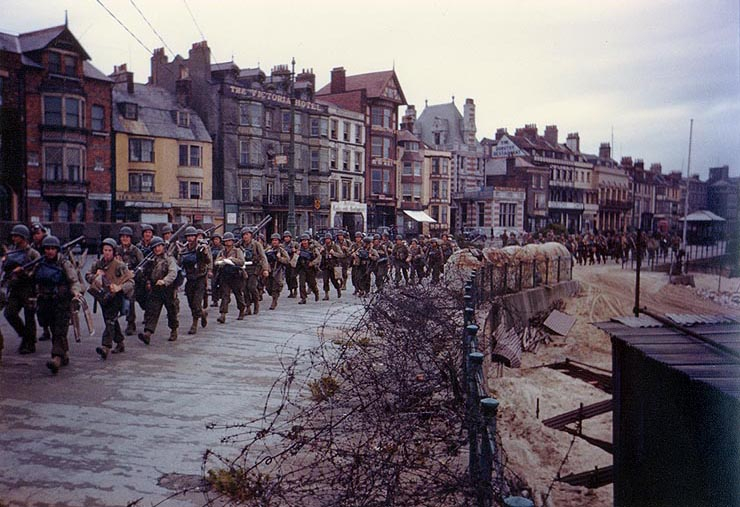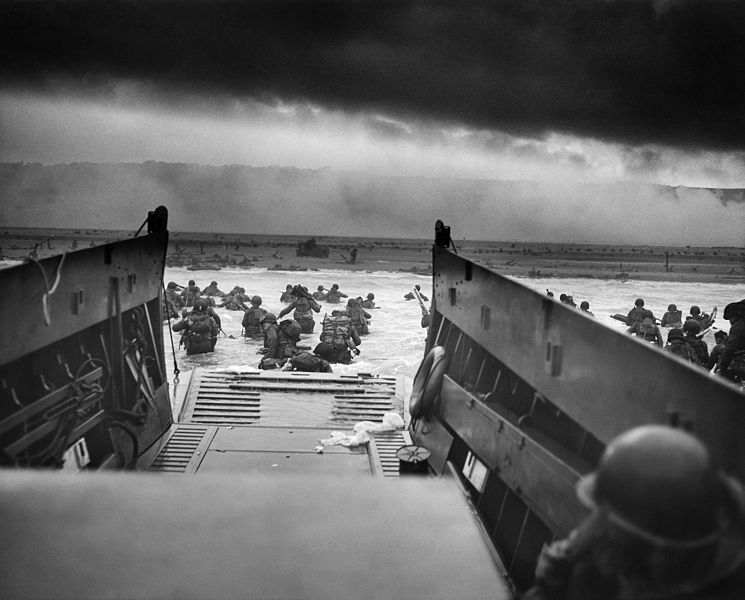Rutgers Oral History Archives shares excerpts of interviews with members of the armed forces who participated in the Normandy invasion

'Just the remembrance of what happened on D-Day. That was bad. . . guys laying all around, screaming. . . I didn't want to go back there, try to bring that up anymore, but I guess I should have, you know, just to show respect to all the guys that died.'– Clarence B. Riker
They were eyewitnesses to one of the most significant days in the history of warfare. They watched friends die as they fought for survival. In commemoration of the 70th anniversary of the June 6 D-Day invasion, Rutgers Today presents moving excerpts of stories shared with the Rutgers Oral History Archives by veterans who participated in the armada that broke Hitler’s hold on Western Europe.
Ernest A. Hilberg, interviewed on Aug. 18, 2007, was in a landing craft approaching Omaha Beach when a shell blew a hole in its bottom and the craft began to sink. He jumped in the water, confident that his 6-foot, 4-inch frame would be able to touch bottom.
Hey, I've got news for you; the water is more than six-feet-four. [laughter] The depth is around seven feet. "Oh, jeez, I don't want to drown." So, I pushed off and, lo and behold, I could bounce up and get a breath of air. So, the trick was to bounce up and forward at the same time, and here's this guy, he says, "Help, help." So, I grabbed his arm and pulled him along with me. Eventually, we got where we could walk. Simultaneously at that point, he gets a bullet right in the head.
Morton Kernis, interviewed on April 6, 1996, was an Army Signal Corps technician aboard the USS Ancon as the invasion fleet began to launch its landing craft early on June 6.
My most vivid memory of course, was the fact that these boats would … circle the ship and go in and then get blown to bits and then they would start coming back. Later in the day, they were coming back with all the wounded and the dead people. Again, they would circle the ships, our ship and [were] then told where to go and deposit their wounded and they'd go to the hospital ship and so on. …

Louis Russomano, interviewed on April 7, 2004, was a Navy gunner’s mate aboard the USS Corry, a destroyer sent to support the landings. After the Corry was sunk early in the battle, Russomano and some shipmates spent about three hours in the water before being rescued by another destroyer, the USS Fitch.
You got no time to react. All you want to know is if you're going to stay on the ship or you're going to get off it, because you don't know how bad it was. All the guys down in the engine room were killed, about six or eight of them I guess. … (I was) just hanging on to the life raft, that's all. If you swam to the beach you would have got shot, so you just stayed there. After about three hours another destroyer picked us up. There was a destroyer there and I think there was a minesweeper there too, picked us all up. We're sitting on the back of the ship, they gave us blankets and stuff, and we had to stay there another couple, three or four hours yet, then we headed back to England.

Clarence B. Riker, interviewed on Aug. 17, 2010, landed with the 16th Infantry Regiment, 1st Infantry Division, which took very heavy casualties. Many years later, he was invited to return to Omaha Beach for a reunion. He declined.
Just the remembrance of what happened on D-Day. That was bad. That was bad, guys laying all around, screaming. It was just, you know, a terrible thing. That's the only remembrance. ... That's the only thing. I didn't want to go back there, try to bring that up anymore, but I guess I should have, you know, just to show respect to all the guys that died.
For more information contact Ken Branson at 848-932-0580 or kbranson@ucm.rutgers.edu